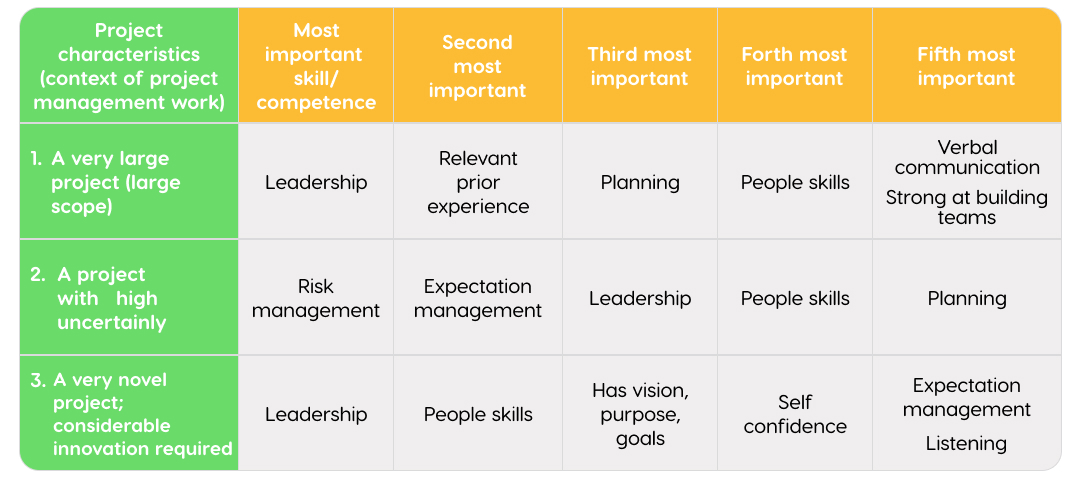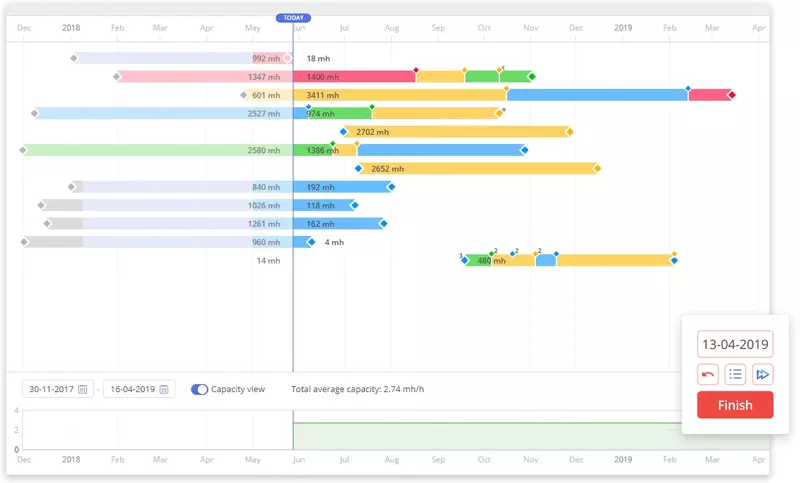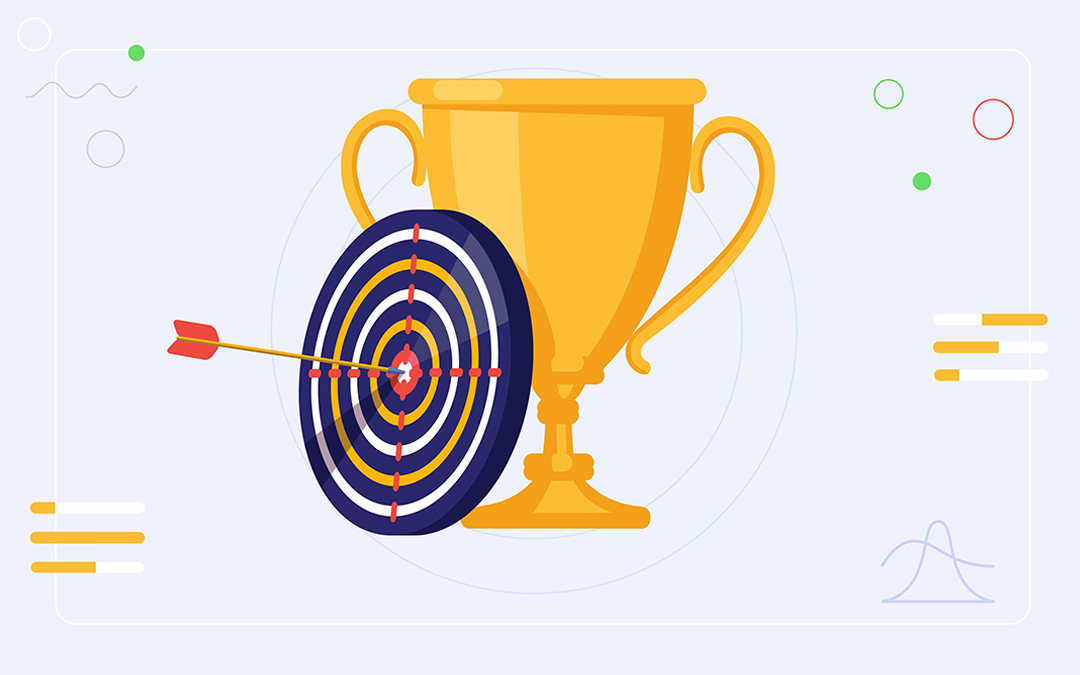Being a successful project manager is not just about creating good plans and schedules and telling the team members what they should work on. It also requires proper coordination of people and processes, the art of effective communication and interaction, and strategic thinking.
What else should a project manager know to succeed in their duties and guide projects to their successful completion? This article will help you figure it out.
How to Achieve Project Management Goals and Objectives?
The ultimate goal of any project manager is simple and clear – ensuring successful delivery of projects they are in charge of. This refers to completing the established scope of work on time and within budget, no matter how many projects they work on – on a single project or multiple concurrent initiatives. This goal can be achieved through meeting the following smaller objectives:
- Creating a detailed and realistic project management plan,
- Ensuring fruitful collaboration between project team members,
- Maximum efficient utilization of available resources,
- Being prepared for risks and uncertainty,
- Effective interaction with project stakeholders,
- Making sure that project team members’ workload is balanced,
- Keeping track of changing requirements so that they don’t derail the project,
- Ensuring that the project delivers its potential to the full (meets business needs, generates expected profit, customers are satisfied with the final deliverable).
Project management objectives aren’t limited to the ones listed above – they may vary depending on the current state of a company’s project management processes and a project manager’s expertise
Now, let’s examine the recommendations that will help project managers achieve the above-mentioned goal and objectives and become successful in their work.
Tip 1. Track performance in the right way
Successful project implementation is impossible without regular monitoring and control. Keeping track of all project processes makes it possible to timely detect any issues in the workflow and take necessary actions to minimize their negative consequences. Despite the fact that it’s common to track performance at the project level, the lifeblood of any project is its people. If they can’t cope with their work or don’t work at their full capacity, their performance will be at a low level. As time passes, reduced resource performance will be reflected on the project level, too. But the problem is that it can be too late to correct mistakes. When there are multiple projects in the environment, tracking resource performance becomes even more essential – due to resource dependency, one resource bottleneck will become an obstacle for efficient work of the whole environment.
Tracking performance at the project level is important as well, but the resource level should be analyzed first and foremost.
Read more: Tracking Performance: Switching from Project to Resource Level
Tip 2. Don’t overload the team
In the present-day dynamic business environment, people are expected to be super-efficient and deliver their work faster. But there’s the other side of the coin – year after year, studies and surveys demonstrate that more than a half of people are burned out at work. It should be mentioned that burnout doesn’t happen overnight – it’s a result of long-term stress typically caused by excessive workload. Obviously, stressed and overloaded employees cannot be productive. What is more, they become bottlenecks for the whole project environment due to making mistakes or inability to cope with their tasks.
So, whatever tempted you may be to assign more tasks to the team members or ask them to work faster to please stakeholders, remember that excessive workload is extremely harmful for the workflow, especially in the long run. Ensuring good project outcomes is only possible with employees’ balanced workload.
Tip 3. See the coherent picture
According to one of the PMI studies, a good project manager has a comprehensive view of a project and its role for a company. It refers to the following things:
- Being able to prioritize (projects to intake, issues to deal with);
- Understanding the business environment and a project’s place in it;
- Being aware of what is going on within a project team, company, and in the industry;
- Understanding the root causes of issues;
- Analyzing possible risks and their impact;
- Being able to predict consequences of their actions.
Such a comprehensive approach will not only facilitate successful completion of projects, but will also allow a company to get maximum profitability and business benefits from its implementation.

Tip 4. Develop your personal and professional skills and competences
Once a project manager completes necessary certifications and starts their career, they shouldn’t stop their personal and professional development.
A project manager’s performance along with specific personal skills and competences are critical for efficient coordination of people and processes and achieving project management goals and objectives. There are different approaches to defining the most important skills and competencies of a successful project manager. Let’s consider two of them.
The first one is the PMI Talent Triangle. Initially, it embraced three skill sets marked by triangle sides: technical knowledge, leadership, strategic and business management. In 2022, it’s been updated in response to the pace of change in the present-day world, and now its sides cover the following skill sets.
- Ways of working.
Project professionals are encouraged to master as many ways of working as possible so that they can apply the right techniques to the right projects and achieve better outcomes.
- Power skills.
This set of skills includes collaborative leadership, communication, empathy, innovative mindset, and for-purpose orientation.
- Business acumen.
Having business acumen means understanding micro and macro influences in a company and the industry, possessing function-specific and domain-specific knowledge for making better decisions. Also, it requires understanding of a project’s alignment with the organizational strategy and global trends.
The other approach was described in the study by the Project Management Institute, which revealed the following top ten project management skills:
- People skills,
- Leadership,
- Listening,
- Integrity, ethical behavior, consistency,
- The ability to build trust,
- Verbal communication,
- Team building abilities,
- Conflict resolution and management,
- Critical thinking, problem solving,
- Understanding and balancing priorities.
However, the same study shows that essential skills and competences won’t be the same for different types of projects – each of them will require a specific combination. They are presented in the table below.

Read more: Key Personal Qualities of an Excellent Project Manager
As the world and business environment changes constantly, there will always be room for professional and personal development. So, a successful project manager should keep up to date with recent trends and be able to implement innovations in their work.
Tip 5. Leverage the right software solution
Advanced project/resource management software solutions will be a perfect contributor to achieving project management goals and objectives. What is more, they become the right hand of a project manager working in an organization where numerous projects run simultaneously. They can automate and simplify a number of processes (scheduling, reporting, etc.), increase efficiency of the workflow, optimize utilization of shared project resources, enable performance tracking, and many more. The example of such a solution is Epicflow – a resource management tool designed for complex multi-project environments. Let’s take a closer look at how it simplifies a project manager’s job and helps them achieve success.
Task and project prioritization
When you work on multiple projects at the same time, it’s too cumbersome for the team members to determine what tasks they should start doing. Epicflow can do this work – it analyzes project-related data and automatically compiles a prioritized task list for every team member.
If you want to check the state of the whole project environment, Epicflow’s Pipeline will show you a prioritized list of projects so that you always know which of them require immediate action.
Providing insight into the workflow state
Epicflow has several features to trace how projects progress, which allows project managers to identify possible issues and timely react to them. One of them is the Bubble Graph that provides information on every project’s “health”. It analyzes each project’s state regarding time and budget constraints and presents it in intuitively easy form.

Read more: Bubble Graph: Critical Chain Fever Chart Re-Imagined
Tracking teams’ progress
As we’ve mentioned earlier, in addition to monitoring the state of projects, it’s even more important to keep track of resources’ progress. Epicflow provides several options for its monitoring. Timesheet is the table that shows the output produced by a group of resources or individual employees. Burnup Chart gives insight into the accomplished and remaining amount of work. The Historical Load Graph shows resources’ efficiency in relation to their capacity. Finally, the Future Load Graph predicts people’s workload and output they’re likely to produce, which helps avoid resource bottlenecks and overload.
Running simulations to make better decisions
Epicflow’s What-if analysis allows you to make informed decisions under conditions of uncertainty. With this feature you can test any changes to projects in a simulated environment (e.g., add and remove projects, change timeline, reallocate resources), analyze their consequences, and make the most reasonable decision.

Automating routine tasks
- When intaking a project that has a similar structure with the ones you’ve managed before, you can use templates of these similar components (tasks and summaries) instead of inputting them into the system from scratch. These templates are stored in Epicflow’s Module Library.
- Epicflow can significantly simplify reporting. In a multi-project environment, gathering necessary data and compiling reports manually is an all-consuming task. Instead, you can choose the necessary period (current or previous month) in Epicflow, and the system will automatically create reports.
- Epicflow’s integration with human resource management systems simplifies assigning resources to project tasks. Thanks to this integration, the data on employees’ unavailability (days off, vacations, sick leaves) automatically appears in the system, which also adjusts priorities and graphs accordingly.
This is just a part of Epicflow’s project management functionality. Find out more of its capabilities that will facilitate achieving project management goals and objectives by booking a call with our specialist.
Key Takeaways
- The ultimate goal of a successful project manager is ensuring successful completion of all projects they run.
- This goal can be achieved by meeting the following objectives: creating a realistic and effective project plan, ensuring fruitful collaboration between the team members, efficient utilization of available resources, balancing employees’ workload, ensuring that the project deliverable meets a company’s business needs and satisfies customers, and more.
- To achieve the above-mentioned goal and objectives, a project manager should:
- pay closest attention to resource performance;
- prevent team members from overload;
- understand the business context of a project;
- develop professional and personal skills and competences,
- utilize the right software solution.

